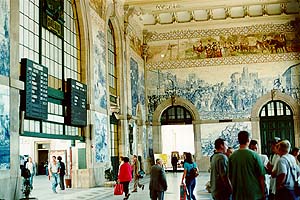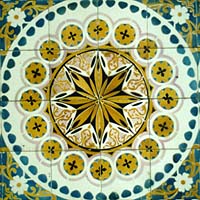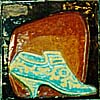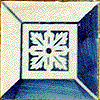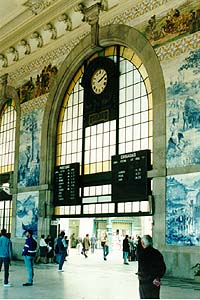
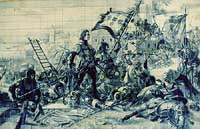
Similar works, by other artists, can be seen in railway stations and markets throughout Portugal. Local traditions and monuments were popular with artists of romantic period, who frequently used postcards and photographs as source material. The battle scene (left) shows the Portuguese capturing a town from the Arabs. The other panel illustrates and audience with the King.
This is São Bento train station in Porto. Porto (Oporto in English) is home to the Port wine industry, and 15 minutes walk from this station are the Port wine cellars where free tours and samples abound. Should you ever find yourself in São Bento take a good look at the huge azulejo murals before you leave, because you'll probably too drunk to see them on the way back.
 The panels here are prime exmaples of the romantic style in Portugese tiles. Jorge Colaço (1868-1942) was key proponent of this style and many of his works feature historical events. These panels illustrate his attempts to apply oil painting techniques to ceramics. Other examples of his work can be found at the train stations in Évora and Beja, and in the Buçaco Palace on the Azores.
The panels here are prime exmaples of the romantic style in Portugese tiles. Jorge Colaço (1868-1942) was key proponent of this style and many of his works feature historical events. These panels illustrate his attempts to apply oil painting techniques to ceramics. Other examples of his work can be found at the train stations in Évora and Beja, and in the Buçaco Palace on the Azores.